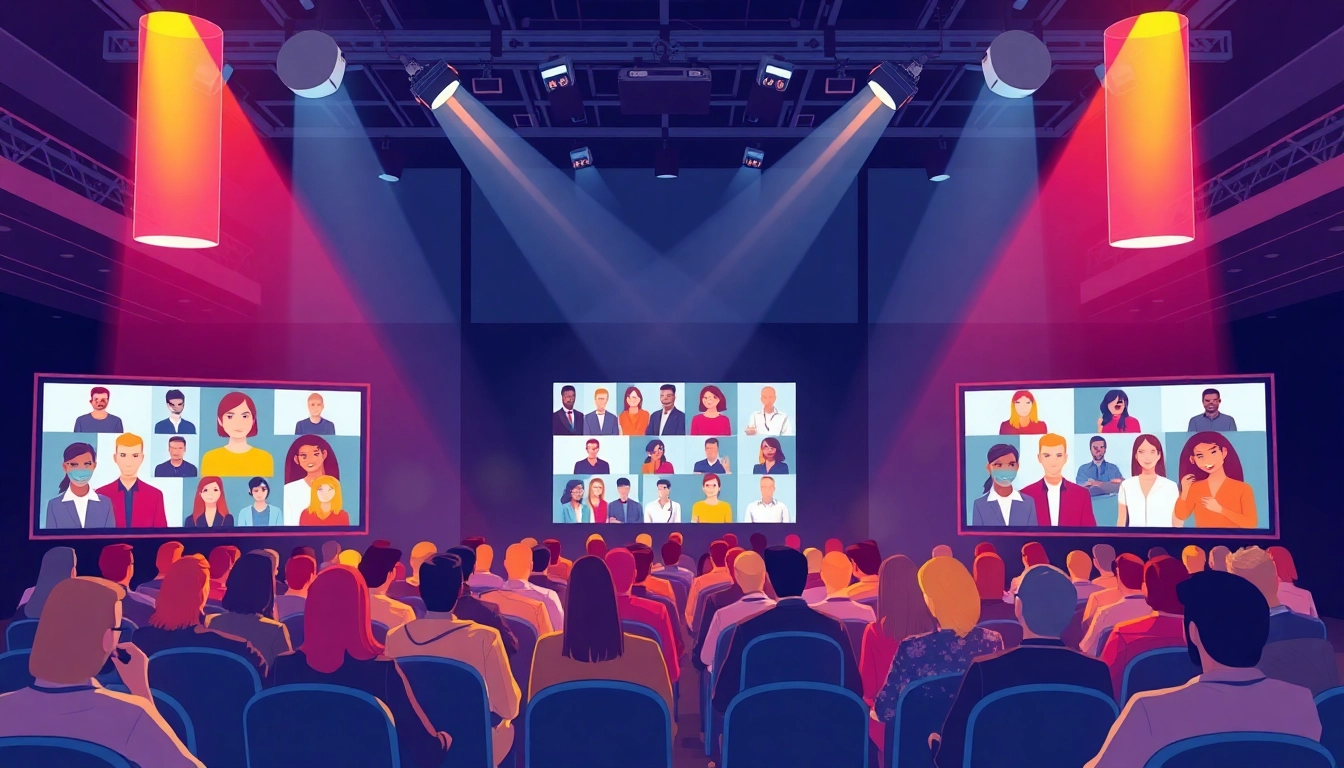
Understanding the Virtual Audience System
Defining Virtual Audience Solutions
In today’s digital-centric world, the rise of virtual events has reshaped the landscape of engagement and interaction. A Virtual Audience System refers to an integrative platform designed to replicate the interactivity of in-person events in a virtual setting. It capitalizes on technology to connect speakers and attendees, allowing real-time feedback and interaction. This system often utilizes various multimedia tools, such as live streaming video, chat rooms, and polls, to foster a lively environment that mirrors live audience participation.
Key Features of an Effective Virtual Audience System
The effectiveness of a Virtual Audience System hinges on several key features that optimize user engagement and experience:
- Real-Time Interaction: Chat functions, Q&A sessions, and live polling that allow attendees to engage directly with presenters.
- Analytics and Reporting: Insightful data collection on attendee behavior and preferences that aid in future planning and improvement.
- Customizable Interfaces: User-friendly platforms that can be tailored to reflect the branding and objectives of an organization.
- Multimedia Integration: Tools that support various content formats, ensuring diverse presentation styles.
- Accessibility Features: Options for closed captioning, sign language interpretation, and translated content to accommodate all participants.
How Virtual Audiences Change Event Dynamics
Virtual Audience Systems have revolutionized event dynamics by breaking geographical barriers and facilitating inclusivity. They allow organizations to reach a global audience without the constraints of location or physical space. The shift away from traditional formats has also introduced greater flexibility in scheduling, enabling people from different time zones to participate conveniently. Additionally, the immediacy of digital communication fosters a more dynamic and engaged participant group, wherein feedback can be gathered and addressed in real-time.
Benefits of Implementing a Virtual Audience System
Enhancing Engagement and Interaction
One of the most significant benefits of adopting a Virtual Audience System is the enhancement of participant engagement. Unlike passive viewing of recorded sessions, live interactions create a sense of community. Systems associated with features such as breakout sessions encourage small group discussions, increasing interaction among attendees. Furthermore, the integration of gamification elements—like leaderboards and challenges—can incentivize engagement, keeping participants invested in the event.
Broader Reach and Inclusivity
The global reach of virtual events means that anyone with an internet connection can participate. This inclusivity not only diversifies the audience but also enriches the conversation through varied perspectives. Moreover, virtual platforms often cater to individuals with disabilities by providing various accessibility features, ensuring that everyone has the opportunity to contribute and benefit from the event. This expansion of audience demographics can lead to a richer exchange of ideas and networking opportunities.
Cost-Effective Event Management
Organizing physical events usually incurs significant costs related to venue rental, travel, catering, and logistics. In contrast, Virtual Audience Systems significantly reduce overhead costs, allowing organizations to allocate resources more efficiently. These platforms also eliminate the need for physical materials, further cutting costs. Most importantly, the savings can be redirected toward enhancing the quality of content and interactivity, leading to a more valuable experience for attendees.
Common Challenges with Virtual Audience Systems
Technical Issues and Troubleshooting
No system is without its challenges, and Virtual Audience Systems are no exception. Technical difficulties, such as connectivity issues, platform crashes, or difficulties in accessing integrated tools, can disrupt the flow of an event. Event organizers need to be prepared with technical support teams who can troubleshoot issues as they arise. This preparation includes reliable testing of the system prior to event commencement and familiarizing participants with the technology used.
User Experience Dilemmas
Providing an engaging user experience in virtual environments can be challenging. Participating from home can invite distractions, causing the attention span of attendees to wane. To combat this, it is vital to design events that are visually appealing, concise, and interactive. Breaking sessions into manageable segments, utilizing engaging presentations, and incorporating breaks can help maintain focus and energy levels.
Maintaining Audience Attention Online
Capturing and retaining audience attention during virtual events requires thoughtful planning. The interactive nature of virtual systems can both enhance and detract from engagement. While live Q&A and polls encourage participation, poorly timed or excessive content can overwhelm attendees. Creating a well-rounded agenda that alternates between presentations, interactive segments, and informal networking can help sustain participant interest throughout the event.
Best Practices for Using a Virtual Audience System
Engaging Content Creation Strategies
Content is the heart of any event, virtual or otherwise. Engaging content reflects an understanding of the target audience’s interests and needs. Tailor presentations to be interactive, using storytelling techniques, real-life examples, and multimedia elements to break monotony. Leaders in this field often incorporate case studies and expert testimonials to create relatability and encourage attendance. Furthermore, integrating social media discussions can foster a continuous dialogue beyond the event.
Utilizing Interactive Features Effectively
Interactive features can help to elevate the virtual experience, but they also require careful planning. Encouraging audience questions and voting during presentations can provide valuable insights and encourage active participation. Organizers should explore different interactive formats, such as quizzes or workshops, to gauge engagement levels throughout the event. Leveraging audience feedback to adjust session pacing or style can promote greater satisfaction and foster commitment to future events.
Measuring Success and Gathering Feedback
To ensure continuous improvement, it’s essential to have metrics in place to gauge the success of virtual events. Attendee surveys can provide direct feedback on their experiences, highlighting areas of strength and opportunities for growth. Analytics tools integrated into the Virtual Audience System can track participation rates, peak engagement times, and session popularity, providing data-driven insights that inform future strategies. Additionally, tracking engagement levels through social media can offer a broader view of event impact and reach.
Future Trends in Virtual Audience Systems
Integration of AI and Data Analytics
The incorporation of artificial intelligence and data analytics into Virtual Audience Systems is poised to enhance personalization and engagement. AI can analyze attendee behavior and preferences, suggesting content that is likely to resonate with individuals based on past interactions. Furthermore, data analytics provide organizers with insights that drive decision-making, aiding in the crafting of more relevant content and agenda formats.
Enhancing Personalization for Attendees
As technology evolves, the demand for personalized experiences in virtual events will grow. Attendees will expect systems to offer tailored content recommendations, personalized agendas, and networking opportunities that align with their interests and professional goals. As a result, organizers can cultivate more meaningful connections and experiences for participants by leveraging insights gained from data analysis.
Emerging Technologies Shaping Virtual Events
Innovation continues to shape the landscape of virtual events, with emerging technologies set to redefine the audience experience. Virtual and augmented reality technologies open new dimensions of interactivity, allowing participants to engage in immersive environments. These technologies can simulate real-world interactions, providing a richer experience that extends beyond traditional screen-based presentations. As these technologies become more accessible, their integration into Virtual Audience Systems will likely drive evolution in how events are structured and experienced.







